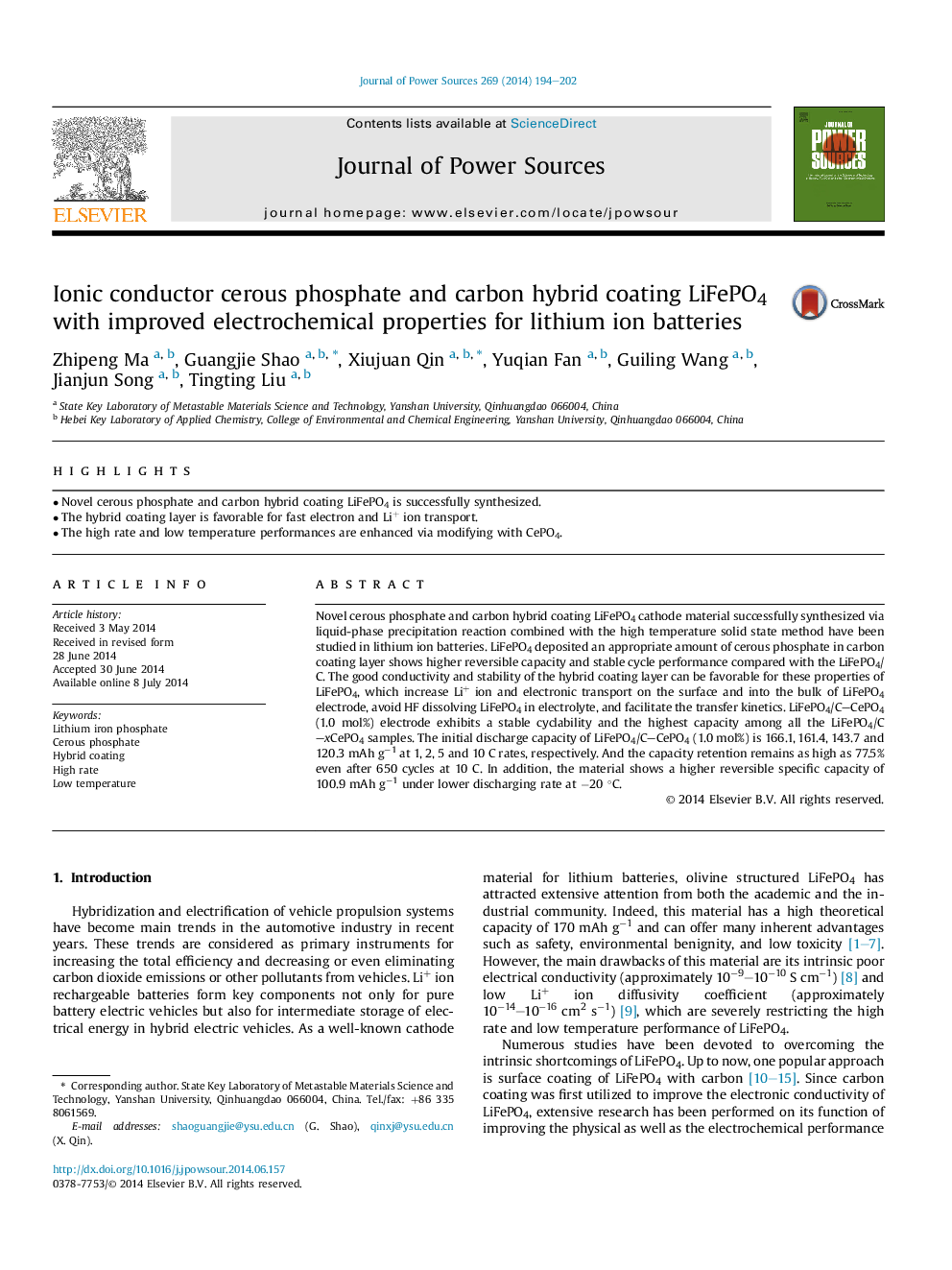| Article ID | Journal | Published Year | Pages | File Type |
|---|---|---|---|---|
| 7736179 | Journal of Power Sources | 2014 | 9 Pages |
Abstract
Novel cerous phosphate and carbon hybrid coating LiFePO4 cathode material successfully synthesized via liquid-phase precipitation reaction combined with the high temperature solid state method have been studied in lithium ion batteries. LiFePO4 deposited an appropriate amount of cerous phosphate in carbon coating layer shows higher reversible capacity and stable cycle performance compared with the LiFePO4/C. The good conductivity and stability of the hybrid coating layer can be favorable for these properties of LiFePO4, which increase Li+ ion and electronic transport on the surface and into the bulk of LiFePO4 electrode, avoid HF dissolving LiFePO4 in electrolyte, and facilitate the transfer kinetics. LiFePO4/C-CePO4 (1.0 mol%) electrode exhibits a stable cyclability and the highest capacity among all the LiFePO4/C-xCePO4 samples. The initial discharge capacity of LiFePO4/C-CePO4 (1.0 mol%) is 166.1, 161.4, 143.7 and 120.3 mAh gâ1 at 1, 2, 5 and 10 C rates, respectively. And the capacity retention remains as high as 77.5% even after 650 cycles at 10 C. In addition, the material shows a higher reversible specific capacity of 100.9 mAh gâ1 under lower discharging rate at â20 °C.
Related Topics
Physical Sciences and Engineering
Chemistry
Electrochemistry
Authors
Zhipeng Ma, Guangjie Shao, Xiujuan Qin, Yuqian Fan, Guiling Wang, Jianjun Song, Tingting Liu,
